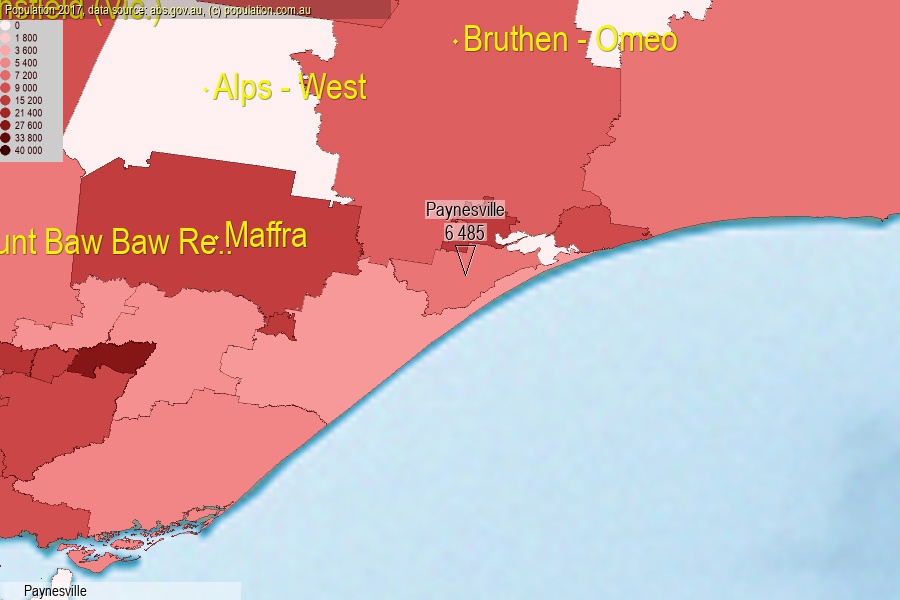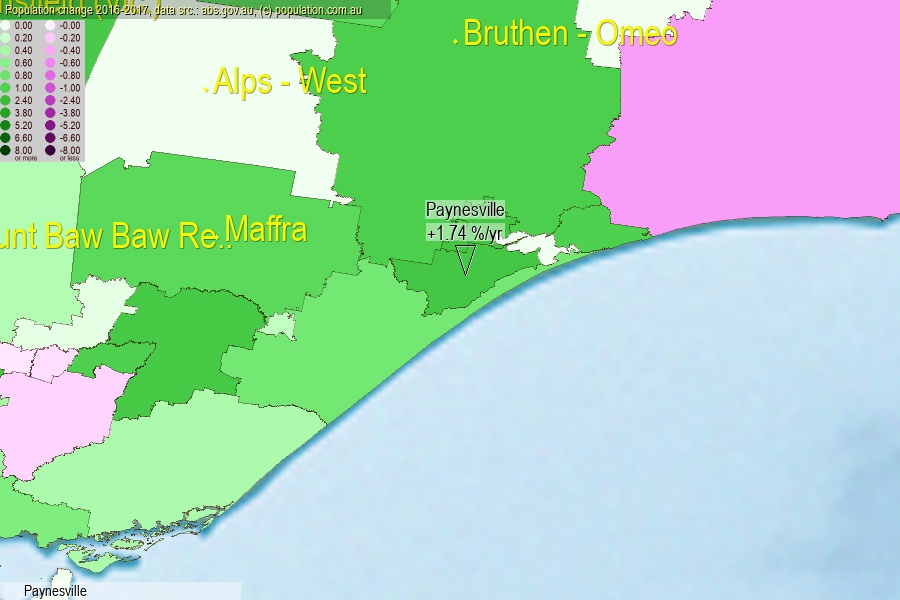 population.com.au
population.com.auLast official estimated population of Paynesville (as Statistical Area Level 2) was 6 485 people (on 2017-06-30)[2]. This was 0.03% of total Australian population and 0.101% of VIC population. Area of Paynesville is 417.90 km², in this year population density was 15.52 p/km² . If population growth rate would be same as in period 2016-2017 (+1.74%/yr), Paynesville population in 2025 would be 7 445. [0]



Click to enlarge. Paynesville is located in the center of the images.
Population [people], population density [p./km²] and population change [%/year] [2]
View borders » (new window) [4]
[1991-1992] +5.34 %/Yr.
[1992-1993] +3.35 %/Yr.
[1993-1994] +3.55 %/Yr.
[1994-1995] +2.49 %/Yr.
[1995-1996] +2.00 %/Yr.
[1996-1997] +3.59 %/Yr.
[1997-1998] +2.30 %/Yr.
[1998-1999] +1.54 %/Yr.
[1999-2000] +0.53 %/Yr.
[2000-2001] +1.16 %/Yr.
[2001-2002] +2.70 %/Yr.
[2002-2003] +1.57 %/Yr.
[2003-2004] +2.25 %/Yr.
[2004-2005] +1.23 %/Yr.
[2005-2006] +1.32 %/Yr.
[2006-2007] +2.40 %/Yr.
[2007-2008] +2.00 %/Yr.
[2008-2009] +3.06 %/Yr.
[2009-2010] +1.98 %/Yr.
[2010-2011] +1.51 %/Yr.
[2011-2012] +1.89 %/Yr.
[2012-2013] +2.19 %/Yr.
[2013-2014] +2.50 %/Yr.
[2014-2015] +2.75 %/Yr.
[2015-2016] +2.81 %/Yr.
[2016-2017] +1.74 %/Yr.
[0] Calculated with linear interpolation from officially estimated population
[1] Read more about SA2 and Australian Statistical Geography Standard (ASGS) on abs.gov.au
[2] Population data from Australian Bureau of Statistics (Population and density: 2017; change: 2016-2017)
[3] Digital Boundaries: Australian Statistical Geography Standard (ASGS) 2016.
[4] Border coordinates are simplifyed using Ramer-Douglas-Peucker algorithm.